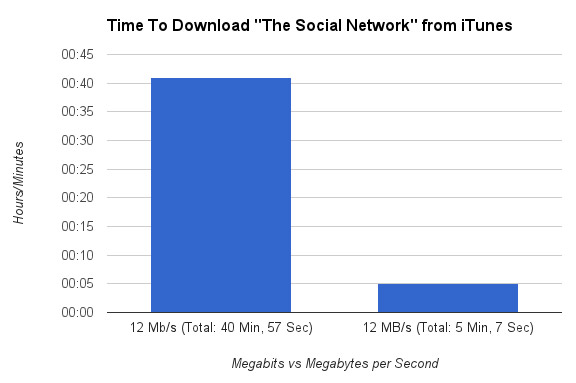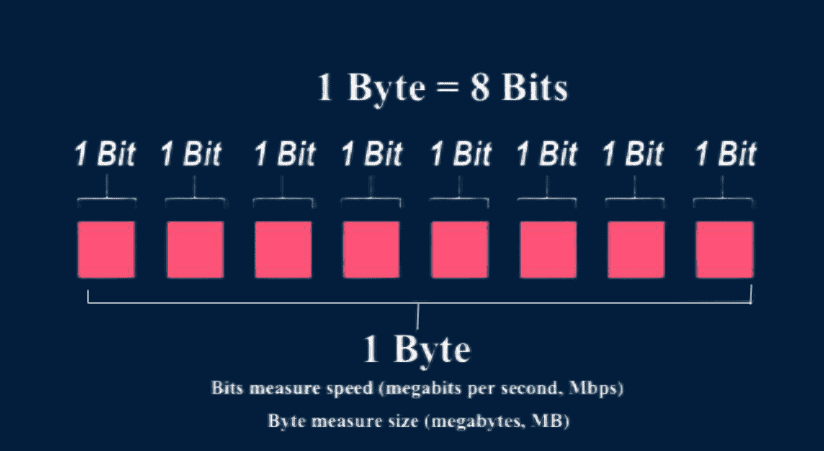Debunking Megabits Per Second: What Customers Required to Know
Debunking Megabits Per Second: What Customers Required to Know
Blog Article
How Megabits Per Second Impact Your Online Activities
The idea of megabits per second (Mbps) plays a critical function in forming our on-line experiences. Higher Mbps can enhance performance and decrease interruptions, while insufficient rates might promote irritation and ineffectiveness.
Recognizing Megabits Per Second
When considering web speed, it's important to comprehend the concept of megabits per second (Mbps), which works as a conventional measurement for data transfer prices. This metric quantifies just how much data can be transferred over an internet connection in one second, supplying a clear understanding of efficiency capabilities - Megabits Per Second. For context, one megabit amounts to one million little bits, and Mbps is typically made use of to reveal bandwidth for numerous on-line tasks
A higher Mbps indicates a quicker internet connection, allowing users to execute tasks such as downloading and install files, searching sites, and engaging in on-line pc gaming a lot more effectively. As an example, common browsing requires around 1-5 Mbps, while streaming high-def video might require 5-25 Mbps. Understanding these requirements is essential for figuring out the ideal net speed needed for specific activities.
Furthermore, the number of gadgets linked to a network can influence total performance. Multiple users streaming, pc gaming, or downloading and install at the same time can strain readily available bandwidth, leading to slower rates - Megabits Per Second. Evaluating individual online routines and requirements is crucial in selecting an internet plan that lines up with one's needs, ensuring a seamless digital experience
Streaming and Buffering Issues
Streaming high-definition material has actually ended up being a staple of modern on the internet entertainment, yet it is often accompanied by annoying buffering concerns. These disturbances can significantly diminish the seeing experience, bring about dissatisfaction and prospective loss of target market engagement. Buffering takes place when the data transferred from the streaming service is not received quickly enough to keep a smooth playback, often because of inadequate web speed gauged in megabits per second (Mbps)

Moreover, real-time streaming can be impacted by network blockage, which occurs when numerous gadgets share the very same transmission capacity. Subsequently, maximizing link speed and making certain ample Mbps is vital for a seamless streaming experience. As streaming solutions remain to develop, recognizing the effect of Mbps on buffering issues stays essential for consumers seeking uninterrupted enjoyment.
Online Gaming Performance
The influence of internet rate on on-line tasks prolongs beyond streaming, considerably affecting online pc gaming efficiency. In affordable video gaming, reduced latency and high bandwidth are critical for a seamless experience. A quick link lessens lag, permitting gamers to react quickly to in-game occasions, which can be the distinction between success and defeat.
Bandwidth, determined in megabits per second (Mbps), plays an essential function in supporting numerous tools and video gaming systems at the same time. Inadequate data transfer can lead to dropped connections or minimized game top quality, negatively influencing gameplay. For example, on the internet multiplayer video games need substantial information transfer, especially throughout peak video gaming hours when various players are online.
Fast-paced first-person shooters demand greater rates to maintain responsiveness, while turn-based method video games might function reasonably well on reduced speeds. As on-line video gaming continues to advance, with enhancing visual fidelity browse this site and even more complicated multiplayer environments, the demand for higher Mbps will only intensify.
Video Conferencing Top Quality
In today's electronic landscape, video clip conferencing top quality is greatly affected by web speed, specifically in terms of bandwidth and latency. High-quality video clip calls need sufficient data transfer to transfer sound and video information effortlessly. Commonly, a minimum of 1.5 Mbps upload and download speeds is recommended for typical definition video clip, while high-definition video conferencing generally demands at the very least 3 Mbps.
Latency, or the hold-up in between sending out and obtaining data, also plays a crucial function in the individual experience. Low latency ensures that conversations circulation normally without unpleasant stops or disruptions. Preferably, latency needs to be listed below 150 milliseconds for efficient interaction. Greater latency can cause echo, lag, and disjointed communications, which can impede collaboration and interaction during conferences.
In addition, several participants in a video clip seminar can strain available data transfer, requiring even greater speeds. Network blockage, usually triggered by simultaneous tasks like streaming or downloading, can additionally break down video high quality. Hence, for companies counting on video clip conferencing for remote cooperation, recognizing the partnership in between megabits per second and general interaction quality is important for preserving productivity and improving online interactions.
Choosing the Right Net Plan
Selecting an appropriate net strategy is important for making certain optimal efficiency in different on-line tasks, especially in setups that demand high transmission capacity, such as video clip conferencing and online pc gaming. Megabits Per Second. When taking into consideration an internet plan, it is important to review both article the rate and data allocation to match your details usage requirements
For families with numerous customers taking part in synchronised tasks, a plan using greater megabits per second (Mbps) is suggested. Generally, a minimum of 25 Mbps appropriates for basic streaming and browsing, while plans going beyond 100 Mbps are more effective for even more extensive tasks. Additionally, take into consideration the nature of your online activities; video conferencing needs at the very least 1.5 Mbps post speed, while on the internet pc gaming may need a lower latency but hop over to here constant link.
Unrestricted data strategies can avoid strangling and disruptions, specifically if hefty usage is prepared for. By attentively choosing a web plan customized to your needs, you can improve your online experience, guaranteeing smooth, uninterrupted accessibility to your recommended activities.
Conclusion
To conclude, the relevance of megabits per second (Mbps) fit on the internet activities can not be overemphasized. Greater Mbps promotes seamless streaming, decreases buffering, improves gaming experiences, and ensures top quality video clip conferencing. Alternatively, poor bandwidth can bring about discouraging disturbances and lessened performance throughout numerous jobs. For that reason, a detailed understanding of individual or family Mbps requirements is crucial for picking an appropriate web strategy that sufficiently sustains varied online activities and user demands.

Normally, a minimum of 25 Mbps is appropriate for standard streaming and surfing, while plans going beyond 100 Mbps are preferable for even more intensive jobs. In addition, consider the nature of your online activities; video clip conferencing needs at the very least 1.5 Mbps post rate, while on-line video gaming may need a lower latency yet regular connection.
Report this page